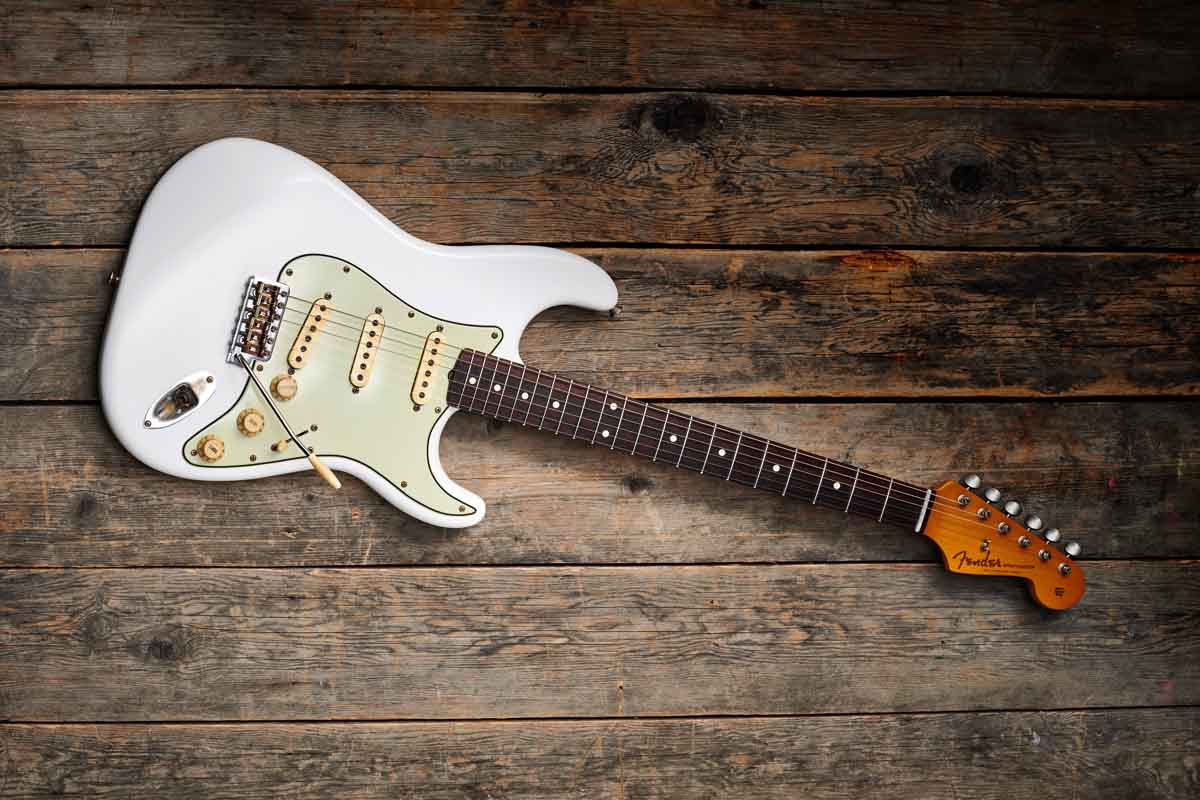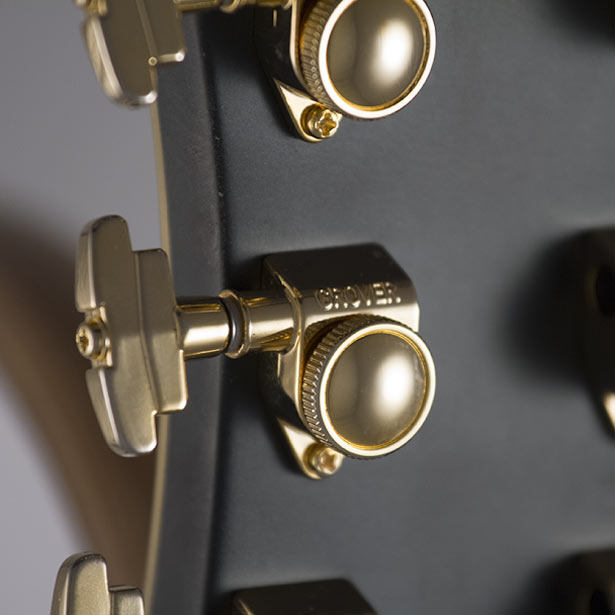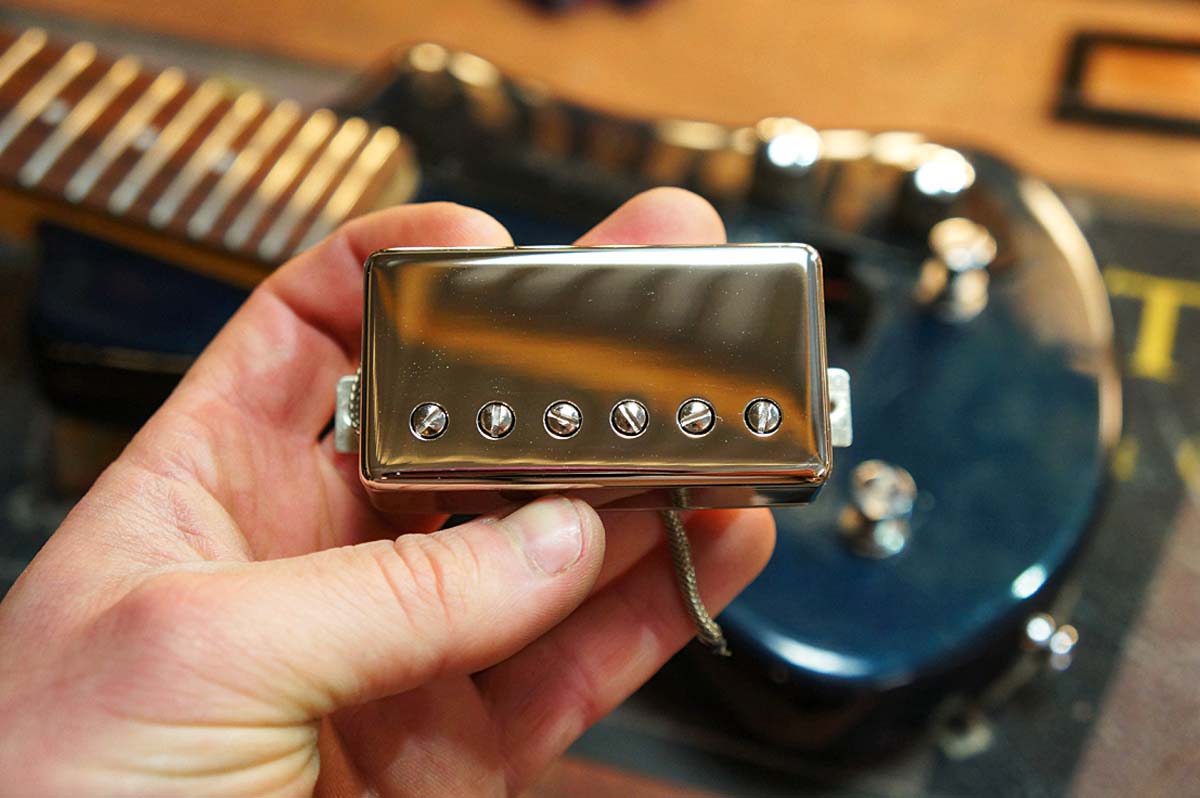Is it worth modding a cheap guitar?
Upgrades can elevate inexpensive guitars, but what should you consider before reaching for the parts catalog?

For many of us, a lower-ticket electric is a perfect vehicle on which to practice our modding chops.
But as many of us will know, by the time you’ve fitted maybe some new pickups, a ‘boutique’ wiring loom, perhaps upgraded tuners and even some new plastic parts, you’ve added considerably to your initial outlay.
While your ‘Frankenstein’ experiment might work out to be ‘the one’, it might not. A modded guitar isn’t always desirable as a used purchase, either, which can mean that, despite the ‘upgrades’, you’ll be losing money if you need to sell it on.
Always really consider what it is you’re trying to improve and do it bit by bit. Listen and evaluate your mods one by one
A mistake many of us make is to not fully play, listen and compare our guitar before we start thinking some upgrades will help. Getting a new or new-to-you instrument to play properly should always be the first step.
A pro setup after you’ve lived with the guitar for a while will maximize what you have - particularly if you prefer heavier/lighter string gauges, where your tech can compensate, invariably tweaking the neck, nut and saddles to really fine-tune your guitar.
Quite often a professional might spot less obvious issues - uneven frets or even a neck that’s not quite as straight or as stiff as it should be. In the world of mass production, even with consistent quality control, don’t expect every instrument to be 100 percent.
Buying online will always be a gamble as opposed to being able to actually play a few guitars before you purchase - and the better the chassis in the first place, the better your mods will sound.
Get The Pick Newsletter
All the latest guitar news, interviews, lessons, reviews, deals and more, direct to your inbox!

But can you turn your £500 guitar into a boutique beauty? There is a school of thought that the actual quality or type of wood used for the neck, fingerboard and body of an electric guitar has zero effect on its amplified sound.
Few contemporary guitar makers would agree. But it's about context. High-end makers are producing guitars that are certainly aimed at professional use.
If you’re working at an amateur-enthusiast level then that Fender Player might do the job just as effectively as an American Professional series instrument costing considerably more, especially if you think about some pukka pickups.
A pickup swap is often the first thing we consider in an upgrade. Here you can spend a couple of hundred dollars easily, often more. However, changing your control circuit will not only cost considerably less but it will maximize what you’re hearing.
Maybe you won’t need to buy those pickups, at least initially. Likewise, string choice and simple pickup-height adjustments all help to dial in what you have.

Is reversibility important to you? We’ve already mentioned that modding probably won’t help you sell on the guitar if you need to. If that’s important to you, keep all the old parts, including the wiring loom, should you change it. That way you can always restore the guitar to its original spec or at least offer the purchaser the original parts.
Back in the day you’d rarely think about replacing a tuner or bridge unless it was broken. Yes, things such as Grover Rotomatics were seen as an upgrade to the original Kluson-style tuners on a Les Paul – something that might be debatable today – but that was more likely an improvement in function.
Rarely do modern tuners cause problems with tuning stability; that’s more than likely the way you attach your strings or a problem at the nut. Locking tuners, however, can certainly help vibrato guitars, although only as a part of a ‘system’ that includes the nut, bridge saddles and the vibrato itself.
For some players it’s all about the sound, for others it’s the playing feel - and probably for the majority of us it’s both
Upgrading things like Tune-o-matic bridges and stud tailpieces won’t turn your Epiphone Les Paul into a ’Burst, but a quality replacement can maximize the acoustic response of a guitar that’s factory fitted with lower-quality parts.
As to the actual material used, well, there’s a rabbit hole. Importantly, always really consider what it is you’re trying to improve and do it bit by bit. Listen and evaluate your mods one by one and be honest with yourself.

Priority Time
For some players it’s all about the sound, for others it’s the playing feel – and probably for the majority of us it’s both. Details such as neck shape, fingerboard radius and fret size really need to be correct at your original purchase.
Yes, you can easily round off fingerboard edges, fettle and polish your frets to improve the feel, and removing the finish, or giving it a satin feel, on the back of a neck – although not reversible – is easy enough. It’s surprising how a little work like this can quite noticeably improve the feel of the guitar.
What you hear and feel are the important things and small tweaks can often bring better rewards than trying to turn your Telecaster into a Les Paul
Refinishing and/or relic'ing and the like are certainly possible, but neither are advisable for the beginner nor for anyone with resale in mind. More likely a change of a Strat or Tele’s scratchplate is easily done, reversible, and some will say it can alter the sound of your guitar, too.
You’ll read plenty of voodoo in your modding quest, but don’t knock it till you’ve tried it. As ever, what you hear and feel are the important things and small tweaks can often bring better rewards than trying to turn your Telecaster into a Les Paul. Turning lead into gold really isn’t easy.

Dave Burrluck is one of the world’s most experienced guitar journalists, who started writing back in the '80s for International Musician and Recording World, co-founded The Guitar Magazine and has been the Gear Reviews Editor of Guitarist magazine for the past two decades. Along the way, Dave has been the sole author of The PRS Guitar Book and The Player's Guide to Guitar Maintenance as well as contributing to numerous other books on the electric guitar. Dave is an active gigging and recording musician and still finds time to make, repair and mod guitars, not least for Guitarist’s The Mod Squad.
“I didn’t think anybody would believe I got it from George Harrison. I figured they’d call me a liar”: Vintage guitar guru Norman Harris names the 5 most memorable guitars that have come through Norman's Rare Guitars
“What blew me away was that everyone wanted the curly maple top. People were calling, saying, ‘I’ve got to have the bird inlays’”: Paul Reed Smith on raising the Standard 24, finally cracking the noise-free guitar and why John Sykes is a tone hero




![[from left] George Harrison with his Gretsch Country Gentleman, Norman Harris of Norman's Rare Guitars holds a gold-top Les Paul, John Fogerty with his legendary 1969 Rickenbacker](https://cdn.mos.cms.futurecdn.net/TuH3nuhn9etqjdn5sy4ntW.jpg)





